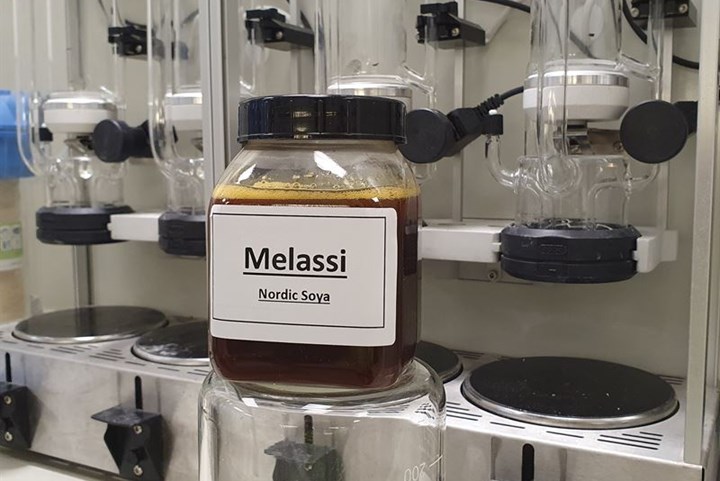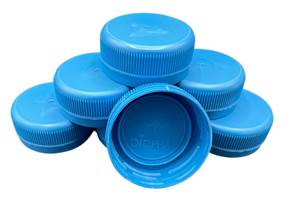Pilot Plant to Produce Multipurpose Bioplastic from Soy Residue
Four Finnish companies in collaboration to develop the first process to produce compostable bioplastic from food and feed production side streams.
A bioplastic plant to be built in Uusikaupunki, Finland, will be piloted on an industrial scale to produce what is said to be the world’s first process to product compostable bioplastic from food and feed production side streams. Four collaborating Finnish companies—, Oy, and , have jointly explored the potential of soy molasses, i.e. soy processing side stream, as a raw material of the future. Partly funded by Business Finland, the research project took four years.
In connection with Nordic Soya Oy, the largest soy protein concentrate processing plant in the E.U., the pilot plant will be built during 2021-2022, with full-scale operation scheduled by the end of 2023.Responsible for coordinating the project is Brightplus Oy which produces new green chemistry innovations together with its partners that can be tested at the pilot plant. Said technology director Jarrko Leivo, "It is a major technological step forward that side streams that are unusable in food production can now be used to produce responsible high value bio-based products. Depending on the application, we can modify the properties of the biomaterial, such as its transparency and thermoformability, or improve its chemical resistance and reusability. We are now looking for pioneer-minded partners interested in this great technology with whom we can develop more innovative applications for this biopolymer.”

Said initiator of the project and CEO of Finnfoam Henri Nieminen, "The process developed as an outcome of this cooperation project is the first in the world to produce an ecological lactic acid polymer from the side streams of soy production. This way we can offer a sustainable alternative to sugar and corn based polylactic acid (PLA).”
Not suitable for food, soy molasses have previously been disposed of by incineration. Producing biomaterials from side streams of food production also improves the food production value chain.
Nordic Soya Oy uses soy grown in Europe in its Uusikaupunki plant. Soy molasses left over from its processing has been used as the raw material in the research. This Finnish innovation combines synthetic biology, chemistry and material technology in what is said to be a completely new way.
Said Tiina Nakari-Setälä, VTT’s v.p. of strategy and 大象传媒 intelligence,"This project is both an excellent example of what expertise in industrial biotechnology can achieve and a triumph in converting a challenging industrial residue into a higher value product using microbes. This endeavor required significant efforts in technology at various stages of the process. It particularly made use of VTT's expertise in synthetic biology, the modification of microbes and optimization of bioprocesses.”
In the future, this Finnish sustainable concept for the development and production of biobased raw material can be extended to new markets where soybean is processed for food and feed production. Bioplastic produced from the residues of soy processing has huge potential as a scalable export product in circular economy. Globally, residues from soy production could produce around 22 million tons per year (44 million lb/yr).
Also known for its medical applications, bioplastic is also ideal for, e.g., the manufacture of various compostable packaging applications and 3D-printing filaments. Finnfoam intends to use the new bioplastic in the production of thermal insulation for buildings. Its ecological quality is enhanced by the fact that thermal insulation also serves as a carbon sink, thus helping to reduce the carbon footprint of buildings.
Related Content
Masterbatches Reduce Gloss in PLA and PETG 3D Printed Products
Insight Polymers & Compounding’s two low-gloss additive masterbatches shown to boost appearance of 3D printed objects.
Read MorePHA Compound Molded into “World’s First” Biodegradable Bottle Closures
Beyond Plastic and partners have created a certified biodegradable PHA compound that can be injection molded into 38-mm closures in a sub 6-second cycle from a multicavity hot runner tool.
Read MoreICIS Launches: Ask ICIS Generative AI Commodities Assistant
Said to be the first of its kind, this AI assistant will enhance access to ICIS’ intelligence and insights for the energy and chemical markets.
Read MoreHow Yeast Could Give Rise to Bioplastic
Researchers work to scale up a biomanufacturing process for succinic acid, an important building block for industrial chemicals and a biopolymer precursor.
Read MoreRead Next
Lead the Conversation, Change the Conversation
Coverage of single-use plastics can be both misleading and demoralizing. Here are 10 tips for changing the perception of the plastics industry at your company and in your community.
Read MorePeople 4.0 – How to Get Buy-In from Your Staff for Industry 4.0 Systems
Implementing a production monitoring system as the foundation of a ‘smart factory’ is about integrating people with new technology as much as it is about integrating machines and computers. Here are tips from a company that has gone through the process.
Read MoreMaking the Circular Economy a Reality
Driven by brand owner demands and new worldwide legislation, the entire supply chain is working toward the shift to circularity, with some evidence the circular economy has already begun.
Read More













